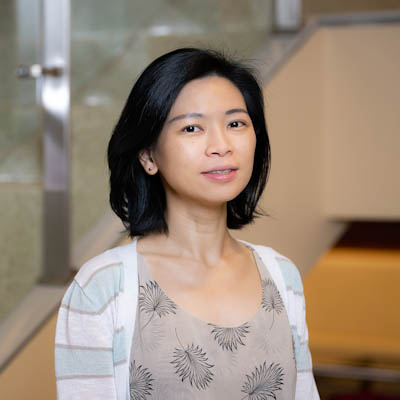Education:
- Ph.D., Institute of Basic Medical Science, College of Medicine, National Cheng-Kung University, Tainan, Taiwan, 2004–2010
- M.S., Department of Physiology, College of Medicine, National Cheng-Kung University, Tainan, Taiwan, 2003–2004
- B.S., Nursing, College of Medicine, National Cheng-Kung University, Tainan, Taiwan, 1999–2003
Research interests:
A functional brain is reliant on proper communication between neurons; thus, brain function is determined by precise cellular connectivity. Given the importance of accurate brain wiring, aberrant brain circuitry, either misconnections or disrupted connections, is the primary cause of neurological diseases. As the demand increases to repair brain circuitry, my primary research interest is to identify factors that are essential for circuitry assembling and are capable to re-wire brain circuitry. My current research focuses on the function of the fibroblast growth factor (FGF) family in cortical development. The FGF family is composed of 22 ligands and 5 receptors. In the brain, the FGF family was found to regulate neural development through neurogenesis and brain patterning. Subsequent observations implicated that the FGF family also monitors neurogenesis in adult animals. Nevertheless, the function of specific FGF-FGFR signaling in relation to brain circuitry remains unclear. FGF/FGFR dysregulation is related to several neurological diseases, such as anxiety, schizophrenia, depression, brain tumors, Alzheimer’s disease (AD), and Parkinson’s disease (PD). Despite this evidence, the causal relationship between dysregulated FGF-FGFR signaling and its contribution to neurological disease remains to be elaborated.
Representative publications:
- Huang J.Y., Lynn Miskus M, Lu H.C. (2017) FGF-FGFR mediates the activity-dependent dendritogenesis of layer IV neurons during barrel Formation. J Neurosci 37:12094-12105.
- Huang J.Y., Lu H.C. (2017) mGluR5 tunes NGF/TrkA signaling to orient spiny stellate neuron dendrites toward thalamocortical axons during whisker-barrel map formation. Cereb Cortex:1-16.
- Ballester-Rosado, C.J., Sun, H., Huang, J.Y., and Lu, H.C. (2016). mGluR5 exerts cell-autonomous influences on the functional and anatomical development of layer IV cortical neurons in the mouse primary somatosensory cortex. J Neurosci 36, 8802-8814.
- Itami, C., Huang, J.Y., Yamasaki, M., Watanabe, M., Lu, H.C., and Kimura, F. (2016). Developmental switch in spike timing-dependent plasticity and cannabinoid-dependent reorganization of the thalamocortical projection in the barrel cortex. J Neurosci 36, 7039-7054.
- Chuang, J.I., Huang, J.Y., Tsai, S.J., Sun, H.S., Yang, S.H., Chuang, P.C., Huang, B.M., and Ching, C.H. (2015). FGF9-induced changes in cellular redox status and HO-1 upregulation are FGFR-dependent and proceed through both ERK and AKT to induce CREB and Nrf2 activation. Free Radic Biol Med 89, 274-286.
- Tsou, Y.H., Shih, C.T., Ching, C.H., Huang, J.Y., Jen, C.J., Yu, L., Kuo, Y.M., Wu, F.S., and Chuang, J.I. (2015). Treadmill exercise activates Nrf2 antioxidant system to protect the nigrostriatal dopaminergic neurons from MPP+ toxicity. Exp Neuro 263, 50-62.
- Jew, C.P., Wu, C.S., Sun, H., Zhu, J., Huang, J.Y., Yu, D., Justice, N.J., and Lu, H.C. (2013). mGluR5 ablation in cortical glutamatergic neurons increases novelty-induced locomotion. PLoS One 8, e70415.
